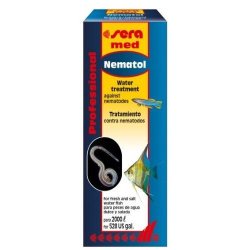Dazzler666
Fish Crazy
I have a five foot C/SA cichlid tank been running around 7 months. Ammonia ' nitrate zero, nitrates below 20 with a PH of 7.2.
Last week i bought a small blue acara from my LFS to go with my adult. When i got him home i noticed something small pertruding from his anis but thought it was constipation. I couldnt QT as had my partners poorly fish in there which passed with dropsy so i had to put him straight in my main tank.
Four days later early morning whilst fish were asleep i noticed a red worm protruding from his anus. I friend of mine had recently also had an outbreak of camellanus so i was aware. I took the fish back to my LFS who conducted a fishy autopsy and they confirmed they found three camellanus worms inside ..... Great!! Altho as the fish was in for four days is it guaranteed that my tank and fish are infected?
In addition one of my rainbows cichlids has a swollen and red gill and some of my fish are flashing which i now suspect to be flukes and not ick.
My LFS has gave me anti-fluke & worm treatment to add which contains Flubendazole (i think!!) but im not convinced how effective it will be on camellanus.
Ive read that levamisole found in cattle & bird wormer is effective which i have got but not yet used.
Has anyone had any experience dealing with camellanus & gill flukes? Any help or advice is greatly appreciated as i dont want this to wipe my tank/s out.
Very valuable lesson learnt about QT fish, just hope its not an expensive lesson!!!
Cheers.
Last week i bought a small blue acara from my LFS to go with my adult. When i got him home i noticed something small pertruding from his anis but thought it was constipation. I couldnt QT as had my partners poorly fish in there which passed with dropsy so i had to put him straight in my main tank.
Four days later early morning whilst fish were asleep i noticed a red worm protruding from his anus. I friend of mine had recently also had an outbreak of camellanus so i was aware. I took the fish back to my LFS who conducted a fishy autopsy and they confirmed they found three camellanus worms inside ..... Great!! Altho as the fish was in for four days is it guaranteed that my tank and fish are infected?
In addition one of my rainbows cichlids has a swollen and red gill and some of my fish are flashing which i now suspect to be flukes and not ick.
My LFS has gave me anti-fluke & worm treatment to add which contains Flubendazole (i think!!) but im not convinced how effective it will be on camellanus.
Ive read that levamisole found in cattle & bird wormer is effective which i have got but not yet used.
Has anyone had any experience dealing with camellanus & gill flukes? Any help or advice is greatly appreciated as i dont want this to wipe my tank/s out.
Very valuable lesson learnt about QT fish, just hope its not an expensive lesson!!!
Cheers.

 /www.inkmkr.com/Fish/FlubendazoleTreatment.pdf
/www.inkmkr.com/Fish/FlubendazoleTreatment.pdf